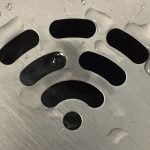You can plug these tiny devices onto the USB port of your laptop or PC and enjoy seamless internet on your Windows 10 PC. Yes, it’s that simple — no more hiding LAN wires inside cable sleeves or tapping them to the floor. Over the last couple of years, Wi-Fi adapters have evolved tremendously. Now, they are small and compact. Also, most of them support dual-band 802.11ac meaning they can work over both 2.4 GHz and 5 GHz. Sounds great, right? Let’s see some of the best USB Wi-Fi adapters that work as on Windows 10 PCs.
1. TP-Link Mini AC600 Wi-Fi Adapter
The latter gives you the ability to stream your favorite TV shows and movies with any lags and delivers an interruption-free service when you browse. Plus, the small size ensures that it doesn’t get in the way. You can forget all about it once you plug it in. Installation is easy, and the speed it delivers is great. Of course, that depends on your proximity to the routers and on the router’s speed as well. But rest assured that should your router support the 5 GHz band, the Mini AC600 adapter will get you a decent speed. Should you decide to buy it, you will love it for its size and portability.
2. Cudy AC 650 Nano Size USB Wi-Fi Adapter
This Wi-Fi adapter promises decent speed. While the 2.5 GHz network delivers up to 200 Mbps, the 5 GHz network can reach up to 433 Mbps (maximum speed). The product reviews have been great regarding this product, especially considering the price. Users have reported a significant boost in Wi-Fi speeds compared to their default Wi-Fi products. Also, the installation is quite easy. When you plug this adapter, it installs by itself and requires no driver installation in most Windows 10 PCs. It works with USB 2.0.
3. Inamax AC600 Mini Wireless Network WiFi Dongle
This is a popular product and users love its performance when it comes to network speed. But above that, users love the build quality that is associated with this mini adapter. This one is built to withstand the test of time, and can handle everyday wear and tear without issues. This is a USB 2.0 adapter and doesn’t work on Linux machines.
4. EDUP AC600 Wi-Fi Adapter
The signal strength of this adapter has been commended by many. Many users have gone ahead and announced that it has less downtime and minimal connection loss. And even if that occurs, it doesn’t take much time for it to spring back into action. Since it’s an 802.11ac adapter, you are likely to get high-speed Wi-Fi, provided you have the necessary bandwidth. However, installation is not as easy as plug and play. On Windows 10 PCs, you might have to download some additional drivers for the adapter to work. Many users have recommended that the Realtek drivers work best for this. The good news is that once the installation is complete, this device works like a charm.
5. TP-Link Archer T2U Plus USB Wifi Adapter for PC
It has a 5dBi antenna gain, thanks to the 802.11ac wireless protocol, similar to most of the Wi-Fi adapters in this list. For those unaware, a dBi of this strength gives you a wider coverage area. But do note that should you go for higher dBi adapters, you are likely to end up with weaker signals. The Archer T2U Plus is compatible with USB 2.0, and well, it performs well. Users seem to like its for its good signal strength, easy installation process, and the fact that it’s a durable product.
6. Netgear Nighthawk AC1900
Regarding speed and performance, it delivers decent speed. It’s fast and is lag-free at the same time, thus making it ideal for gaming or streaming HD movies. Though it’s a USB adapter, it significantly bigger than its counterparts. If you have many USB ports side by side, it will block out all the other ports. This is a point you might have to consider before buying.
Let the Force Be Strong
Most desktop PCs which come with Wi-Fi cards can’t handle the frequent interference of the modern-day world. You will frequently see connection loss or delay in browsing web pages. Plus, they are seldom compatible with the newer devices at home such as Comcast. Wireless Wi-Fi adapters change this scenario. And the best thing is that they do not need an extra source of power. Just plug them to a compatible USB port. So, which one will you buy? The above article may contain affiliate links which help support Guiding Tech. However, it does not affect our editorial integrity. The content remains unbiased and authentic.














